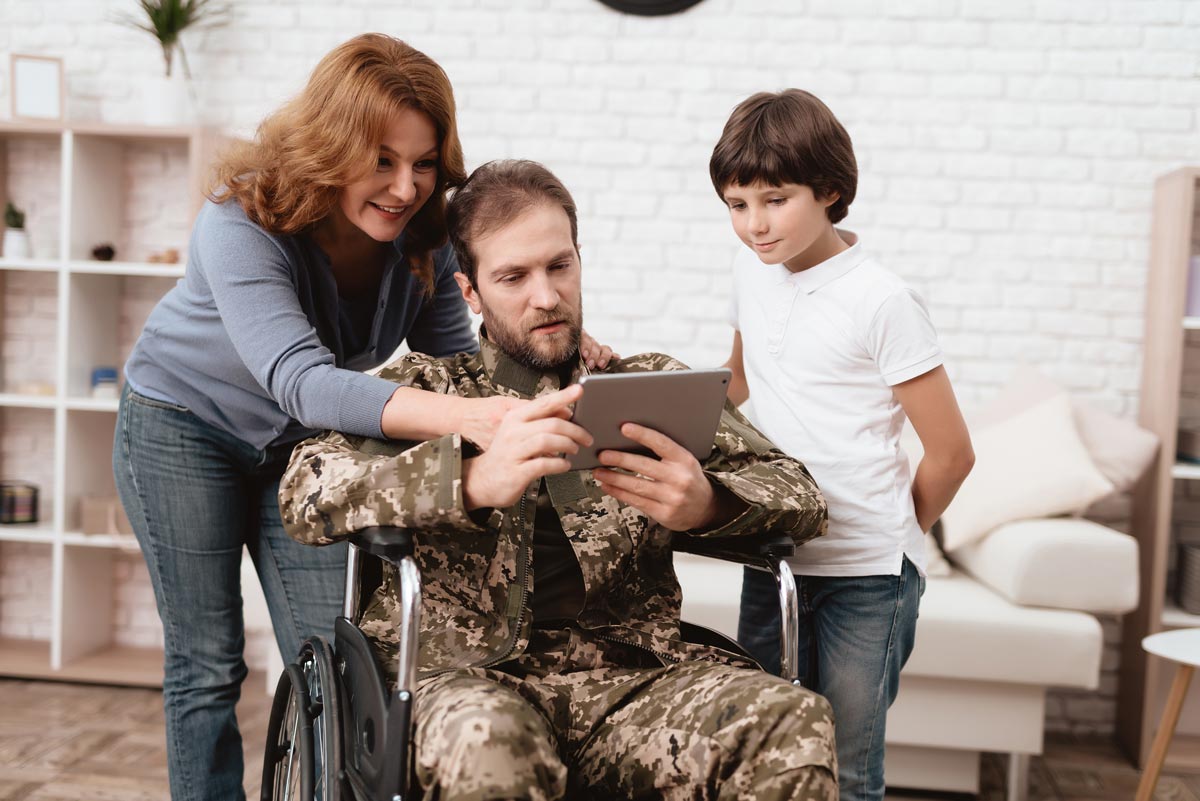The Least Restrictive Environment (LRE) is a cornerstone in education, ensuring students with disabilities learn alongside non-disabled peers. Rooted in the Individuals with Disabilities Education Act (IDEA), it promotes inclusivity and equitable education access. LRE shapes Individualized Education Programs (IEPs) and involves educators in adapting settings to each student's needs. LRE's benefits include enhanced interaction and self-esteem, though challenges exist. There's more to uncover about LRE's impact and future in education.
Key Takeaways
- LRE stands for Least Restrictive Environment, ensuring students with disabilities learn alongside non-disabled peers whenever appropriate.
- It is rooted in the Individuals with Disabilities Education Act (IDEA), promoting inclusive and equitable education.
- LRE emphasizes individualized education plans (IEPs) to support students' unique needs in mainstream classrooms.
- Educators play a key role in implementing LRE by evaluating each student's best educational setting.
- Monitoring student progress and adjusting strategies are crucial for effective LRE practices and future improvements.
Understanding the Principle of Least Restrictive Environment
When we talk about the principle of Least Restrictive Environment (LRE) in education, we're focusing on ensuring that students with disabilities learn alongside their non-disabled peers as much as possible.
This principle highlights the importance of inclusivity and participation in a regular classroom setting rather than isolating students in separate programs. We believe that students thrive when they're part of a diverse learning environment.
It's essential for fostering social interactions and building relationships, which are key to personal and academic growth.
We know that LRE might look different for each student. It's about finding the right balance between providing necessary support and promoting independence.
The Legal Foundations of LRE

Although the concept of the Least Restrictive Environment (LRE) is fundamental to inclusive educationEducational practices that integrate students with disabilities into general education classrooms, s..., its legal foundations are rooted in key legislative acts.
The Individuals with Disabilities Education Act (IDEA) is vital, mandating that students with disabilities should learn alongside their non-disabled peers to the maximum extent appropriate. This guarantees equitable access to education and fosters an inclusive school culture.
Moreover, Section 504A provision of the Rehabilitation Act of 1973 that prohibits discrimination based on disability in p... of the RehabilitationThe process of helping individuals with disabilities achieve and maintain their optimal physical, se... Act reinforces this by prohibiting discrimination based on disability. It requires schools to provide necessary accommodationsModifications or adjustments in healthcare settings to support patients with disabilities., advocating for students' rights to participate in mainstream classrooms.
Together, these laws form the backbone of our commitment to LRE, guaranteeing every student receives a quality education. Understanding these legal frameworks helps us appreciate the importance of LRE in education.
LRE and Individualized Education Programs (IEPs)
When we consider the relationship between LRE and IEPs, it's crucial to understand how LRE requirements shape the creation and implementation of individualized education plans.
We need to guarantee that IEP goals align with these requirements to support each student's unique needs in the least restrictive environment.
Defining LRE Requirements
Understanding the Least Restrictive Environment (LRE) requirements is essential for developing effective Individualized Education Programs (IEPs).
We've got to guarantee that students with disabilities learn alongside their non-disabled peers to the greatest extent appropriate. This means we must evaluate each student's needs and provide necessary support without isolating them. The goal is to integrate students into general education settings as much as possible, promoting inclusionThe practice of creating environments in which any individual or group can be and feel welcomed, res... and maximizing their access to the same educational opportunities.
When we consider LRE, we're looking at a continuum of placements that range from full inclusion in general education classrooms to specialized settings.
Our task is to determine where on this continuum a student will thrive best while meeting their unique educational needs. Let's remember that the focus is on individualized, not one-size-fits-all.
Aligning IEP Goals
Now that we've explored the concept of the Least Restrictive Environment (LRE) and its importance let's focus on aligning IEP goals to guarantee they reflect this principle.
When drafting IEPs, we must make certain that each goal supports the student's ability to learn alongside their peers to the greatest extent possible. We need to take into account how these goals will help students access the general curriculum and participate in regular classroom activities.
Collaboration with teachers, specialists, and families is essential to develop meaningful, achievable objectives that consider the student's unique needs and strengths.
By aligning IEP goals with LRE, we enable students to thrive in inclusive settings, fostering both academic and social growth.
Let's prioritize creating supportive, dynamic educational experiences.
Measuring Student Progress
Evaluating student progress is essential in guaranteeing that IEPs effectively reflect the principle of the Least Restrictive Environment (LRE).
We need to monitor how well students are meeting their IEP goals to determine if the current setting supports their learning needs. By using assessments and regular observations, we can gather valuable insights into their development.
It's important to include various perspectives, such as teachers, parents, and specialists, to get a thorough understanding of progress. This collaborative approach helps us make informed decisions about necessary adjustments.
When we notice significant growth or challenges, we can adaptA grassroots disability rights organization in the U.S. that focuses on promoting community-based se... the IEP to better align with the student's evolving needs. By doing so, we guarantee each child is in an environment that fosters success.
The Role of Educators in Implementing LRE
As educators, we play an essential role in implementing the Least Restrictive Environment (LRE) by first understanding its principles.
By employing collaborative teaching strategies, we can guarantee that all students receive the support they need.
Ongoing professional development allows us to refine our approaches and stay informed about best practices in inclusive education.
Understanding LRE Principles
While we explore the principles of Least Restrictive Environment (LRE) in education, it's crucial to understand the pivotal role educators play in implementing these principles effectively.
LRE guarantees students with disabilities learn alongside their peers to the greatest extent possible. As educators, we must evaluate each student's unique needs to determine the best setting for them. We're tasked with balancing support and independence, fostering inclusive learning while respecting individual capabilities.
Our decisions should be guided by the belief that all students deserve access to quality education. We need to stay informed about legal mandates and educational best practices.
Collaborative Teaching Strategies
To effectively implement the Least Restrictive Environment (LRE) principles, collaborative teaching strategies are essential.
We need to work together as educators, combining our skills and knowledge to support diverse learners. By co-teaching, we can blend different instructional approaches, ensuring each student receives the support they need.
This partnership allows us to create inclusive classrooms where all students thrive. Communication is key; we should regularly discuss student progress and adapt our methods.
Let's use shared planning time to align our goals and strategies, maximizing our impact. By pooling our resources and expertise, we can tailor instruction to meet varied learning needs.
Together, we can foster an environment where every student feels valued and capable of succeeding.
Ongoing Professional Development
Building on our collaborative efforts in the classroom, let's focus on our growth as educators through ongoing professional development. This journey is essential for effectively implementing Least Restrictive Environment (LRE) practices.
By continually refining our skills, we guarantee that all students, regardless of abilities, receive the quality education they deserve. Professional development opportunities—such as workshops, seminars, and online courses—equip us with innovative strategies and insights into diverse learning needs.
Staying informed about the latest educational trends helps us adapt and respond to challenges with confidence. Let's tap into our shared experiences, exchanging ideas and solutions to foster an inclusive environment.
Our commitment to lifelong learning not only enriches our teaching but also transforms our students' educational experiences. Together, we can make a difference.
Benefits of LRE for Students With Disabilities

Embracing the concept of the Least Restrictive Environment (LRE) offers numerous benefits for students with disabilities, as it fosters an inclusive educational experience. By placing these students in general education settings alongside their peers, we promote social interaction and reduce stigmatization.
This environment enhances learning opportunities by exposing students to diverse perspectives and experiences, encouraging growth both academically and socially.
We also see an improvement in self-esteem and confidence as students feel more integrated and less isolated. Teachers and peers become more aware and accepting of differences, creating a supportive community.
LRE encourages us to adapt teaching methods, ensuring that all students receive the necessary support to succeed. This inclusive approach not only benefits students with disabilities but enriches the entire classroom environment.
Challenges and Considerations in Applying LRE
While the concept of Least Restrictive Environment (LRE) is foundational to inclusive education, implementing it presents certain challenges and considerations.
We need to balance the individual needs of students with disabilities with the resources available in general education settings. Sometimes, educators face difficulties ensuring adequate support without segregating these students.
There's also the challenge of training staff to effectively manage diverse classrooms. Additionally, we must consider the varying degrees of acceptance from peers, which can impact a student's social experience.
Collaborating with parents and specialists is essential, but this can sometimes lead to differing opinions on what's best for the student.
Despite these hurdles, maintaining open communication and fostering a supportive school culture can help us address these challenges effectively.
Evaluating and Adjusting LRE Practices
To effectively support students with disabilities, we must continually evaluate and adjust our Least Restrictive Environment (LRE) practices. This ongoing process involves examining how well our strategies and environments meet the diverse needs of our students.
We should consider the following steps:
- Gather Feedback: Regularly solicit input from teachers, students, and families to understand their experiences and needs.
- Assess Outcomes: Analyze student progress data to determine the effectiveness of current LRE placements.
- Review Resources: Verify that necessary supports, like assistive technologies and specialized staff, are available and utilized efficiently.
- Implement Changes: Based on feedback and data, make informed adjustments to improve inclusivity and accessibilityThe design of products, devices, services, or environments to be usable by people with disabilities.... in educational settings.
The Future of LRE in Educational Settings

As we reflect on our current practices and make necessary adjustments, it's important to contemplate the future trajectory of the Least Restrictive Environment (LRE) in education.
We're seeing a push towards more inclusive classrooms, where technology plays a crucial role. Adaptive tools and personalized learning platforms will likely become integral, helping us cater to diverse needs.
Collaboration between educators, parents, and specialists will remain essential for creating effective learning environments.
We'll need ongoing professional development to stay informed about best practices and innovations.
In the future, our challenge is to balance technological advancements with personal connections, ensuring every student feels valued and included.
Conclusion
In understanding the Least Restrictive Environment (LRE), we've explored its legal foundations, the role of IEPs, and the crucial part educators play. We've seen how LRE benefits students with disabilities by promoting inclusion and personalized learning. However, challenges persist in its application. As we move forward, let's remain committed to evaluating and refining our practices, ensuring every student receives the support they need to thrive in the most inclusive setting possible. Together, we can shape the future of education.






